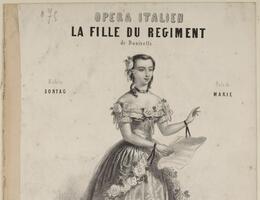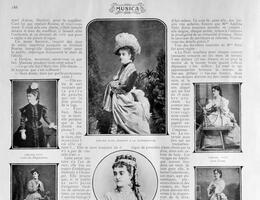La Fille du régiment
Opéra-comique en deux actes
After settling in Paris in October 1838, Donizetti composed his two-act opéra comique, La Fille du régiment, to a libretto by Saint-Georges and Bayard. The work, which was given its premiere on 11 February 1840, was a great success, despite its varied reception by critics (Berlioz in particular wrote a damning article). To this day, it has remained the composer’s most popular work. The Italian version of the French original prepared by Donizetti shortly afterwards, with recitatives replacing the spoken dialogue, never really made the grade. Served by the effective dramatic writing, the varied musical style of the work is somewhere between opéra comique and opéra bouffe. Its martial inspiration pandered to French patriotism, as did the storyline: in the Tyrolean Alps, Marie, the young vivandière (canteen girl) has been adopted by the 21st regiment of Napoleon’s army. She has promised to marry one of the soldiers in its ranks, even though she loves Tonio, the Tyrolean who saved her life. He enlists in the French army in order to make their marriage possible. However, Marie turns out to be the daughter of the Marquise of Berkenfeld, who takes her under her wing, teaches her manners and intends her to wed the Duke of Crackentorp. On the day of the wedding, the 21st regiment appears, led by Tonio. He finally succeeds in persuading the Marquise of Berkenfeld to allow him to marry Marie. Memorable numbers include the “Rataplan” chorus, the tenor aria “Pour mon âme” (Tonio), one of the most difficult in the repertory with its nine high Cs (and one of the few points in the score where the vocal style is clearly Italian), the elaborate cavatina “Salut à la France!” (Marie), repeated at the end of the work, and the trio “Tous les trois réunis”.


